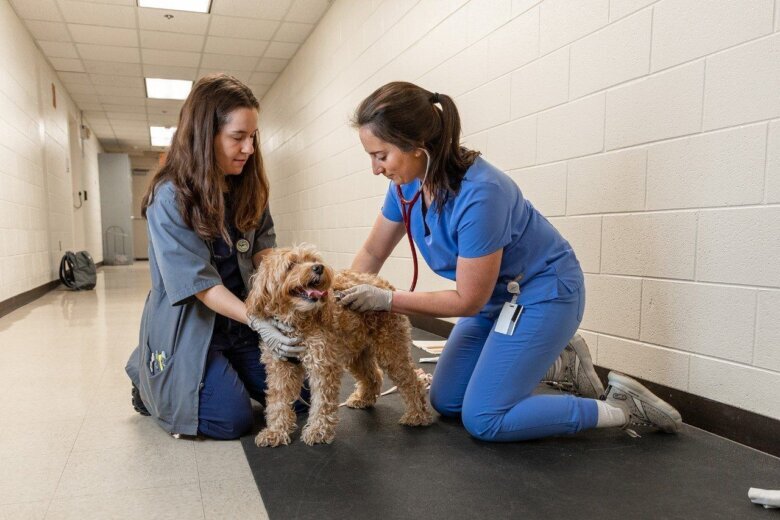
Surgery is the first and most common treatment for most people with brain tumors — however, it’s not always an option.
An ongoing trial at Virginia Tech’s Virginia-Maryland College of Veterinary Medicine is investigating whether a noninvasive therapy could eliminate the need for surgery in treating brain cancer in dogs.
“Histotripsy is focused ultrasound therapy, which uses high-pressure ultrasound waves to ablate or break down whatever the target tissue is,” said Lauren Ruger, a postdoctoral research associate at Virginia Tech in the Department of Biomedical Engineering and Mechanics. “We’re applying histotripsy for a new application, seeing whether or not it’s able to non-invasively break down spontaneous brain tumors in dogs.”
The trial is led by John Rossmeisl, a professor of neurology and neurosurgery, and Rell Parker, an assistant professor of neurology and neurosurgery.
Three dogs were enrolled in the trial and treated with histotripsy. That treatment was followed by surgical resection, or removal, of their tumor. Now, the group is planning follow-up studies.
Ruger said histotripsy was initially designed and used to treat liver tumors, but within the past several years there’s been “an explosion” in research for different applications.
“There are fundamental differences in tissues” between the liver and brain, said Ruger. “There are open questions about whether brain tumors are a good target for histotripsy.”
So, to ensure the dogs in the trial are getting the current standard of care, the histotripsy treatment is being followed by surgery.
“To make sure that we’re able to break down the tumor completely and that these animals, who are people’s pets, are still getting the cancer care they need, we apply the therapy, and then the standard of care would be that they get a surgical resection of the tumor, anyway,” Ruger said.
While surgery is still part of the equation, Ruger said noninvasive scans can show the histotripsy is destroying the tumors.
“One of the advantage of histotripsy is that on a post-treatment MRI or CT image, you can tell whether or not the tissues has been damaged or broken down enough that the tumor is no longer viable,” Ruger said. “In the long term, the hope is you would be able to apply the therapy and just use standard MRI or CT imaging follow-up to confirm that the tumor is no longer viable, without the need for surgical removal.”
Ruger said she believes the lessons learned from this trial could eventually be applied to humans.
“One of the advantages of getting to work with these canine patients is they share a lot of biological similarities, and their tumors are very similar to human counterparts,” she said. “And dogs that are of a larger size, we’re using devices that are on a similar scale as those that would be applied in humans.”
Get breaking news and daily headlines delivered to your email inbox by signing up here.
© 2024 WTOP. All Rights Reserved. This website is not intended for users located within the European Economic Area.









